Of all the things you can find in Nevada‘s Lake Mead, sharks are just not one of them.
What you can find are stories of a town underwater, a B-29 Bomber submerged, and a “bathtub ring effect” highlighting the water shortage that plagues the Western United States—and those are just the true stories.
The lore is part of the lure of the lake and ranges from cement-weighed bodies from the mob days, a shark release that has never been proven, and ghosts that haunt the shoreline.
Contents
So… Are There Sharks in Lake Mead?
Google will take you to all kinds of links insisting there are or were once sharks in Lake Mead.
We spoke to the team at the Lake Mead Recreation Area who adamantly denied there were ever sharks in the shored up water of the lake.
Lake Mead is a reservoir lake, man-made when the Hoover Dam opened.
In 1935, the U.S. Fish and Wildlife Service decided to stock up the lake with a variety of fish, but no sharks.
They added bass, crappie, bluegill, and sunfish.
In 1954, shad was added as a food source for other fish.
There are large fish you can find in the lake, including a striped bass up to 40 pounds, but even that is not near the massive size of a shark.
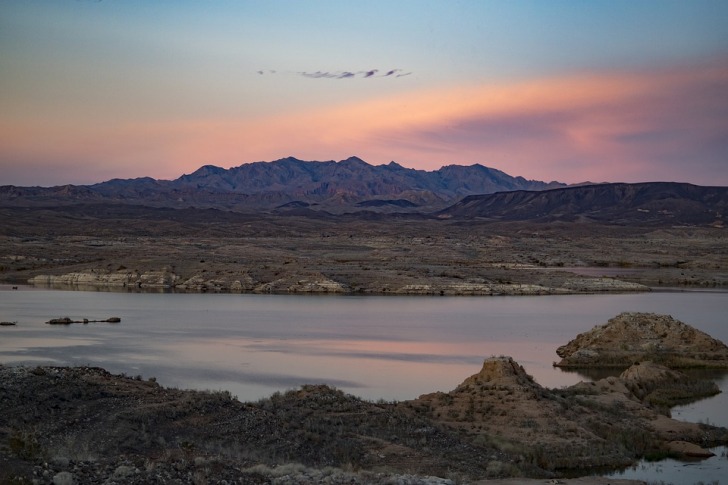
There have long been rumors throughout the Las Vegas historical community that the mob used Lake Mead as a dumping ground for murder victims, so the only shark you might find in Lake Mead would be a loan shark who crossed the wrong mob member.
Is it Safe to Swim in Lake Mead?
More than seven million people come to Lake Mead each year and most of them do some form of water activity.
There are designated areas to swim in Lake Mead:
- Boulder Beach
- Special Events Beach
- Canoe/Kayak Beach
- PWC Beach
The swimming areas at Lake Mead do not have lifeguards, so be sure to wear a life vest at all times.
You cannot swim in any of the marina areas just for safety, so a swimmer and a moving boat are not in the same area.
While you will not get bitten by a shark in Lake Mead, you could get a gnarly itch.
It is called “Swimmer’s Itch” and it comes from a parasite that ducks and geese drop in the water.
It produces a flatform that can burrow under your skin and die.
That causes an itch, swelling, and welts around 12 hours later.
Avoid the swimmer’s itch by toweling off immediately after swimming.
You should also wash off anything you bring in the lake, like a paddleboard or water toys.
Quagga muscles are an invasive species that can ruin a boat’s engine and harm the environment.
Millions of dollars in damage are caused each year by these invasive muscles.
Wash off everything, and we mean EVERYTHING, that comes in contact with the water, as these suckers will stick to whatever they can.
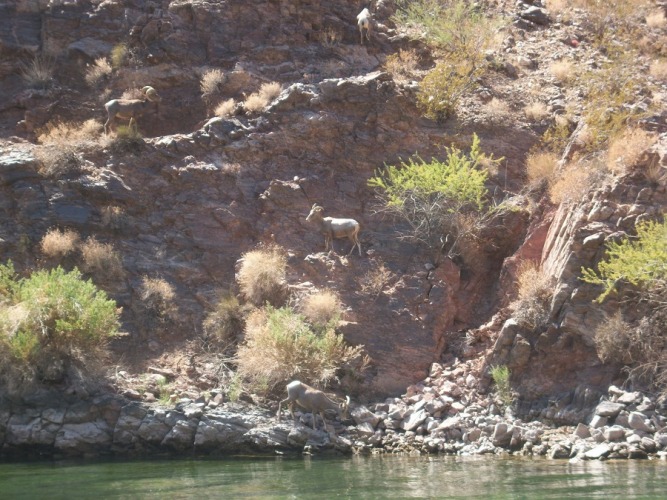
Interesting Shark Facts in Lake Mead
You will find someone who will tell you about the shark infestation of Lake Mead.
They are just telling tall tales.
The Las Vegas Review-Journal put this shark issue to bed in 2015, addressing rumors that sharks somehow swam up to Lake Mead in the 1970s or 1980s but punctuating the point with “just so we are square on that one, it never happened.”
There is the story of the Lake Mead Monster, which is up there with unicorns and leprechauns, but here is how the story goes.
In July of 1948, a B-29 Bomber was flying low over the lake.
Too low, as it turns out.
It crashed and the five people on board escaped.
The bomber was left to settle nearly 300 feet below at the bottom of the lake.
That part of the story is true.
Here is where it gets wonky.
Folklore says someone let loose some pet alligators into the lake and the fuel from the bomber was ingested by the alligator, creating a monster that ate up all the fish.
Thus began the legend of the Lake Mead Monster.
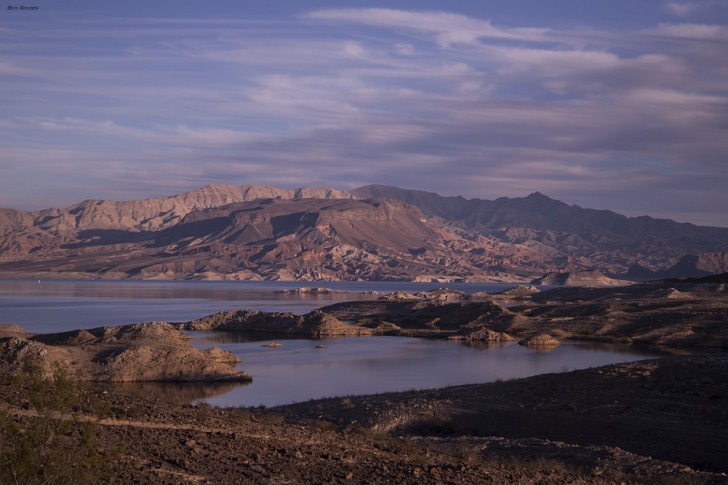
Sharks thrive in saltwater and can even make it in brackish water.
Freshwater is an enemy of most sharks.
Sharks need salt to keep their bodies from bloating.
Without salt, they are going to inevitably die.
In the United States, the only exception is the bull shark.
These tough sharks can swim in rivers and lakes that are freshwater because their bodies are designed to better retain their own salt composition and not lose it to the surrounding water.
However, even these tough animals will not make it more than 4 years in freshwater.
There is a more secretive class of sharks known as river sharks.
These mysterious sharks have been reported in the freshwaters of Australia and Southeast Asia.
We would love to tell you more about them, but even the scientists who study them know very little about these introverted creatures.
The Ganges river shark is nick-named a “man-eater”, yet even the scientists trying to study its ways can only say it resembles a bull shark.
Most river sharks are endangered.
Sharks can live in waters from as cold as 41°(F) or as warm as 70°(F), depending on the species.
If you go swimming in water that is warm enough for you to swim, sharks can swim there as well.
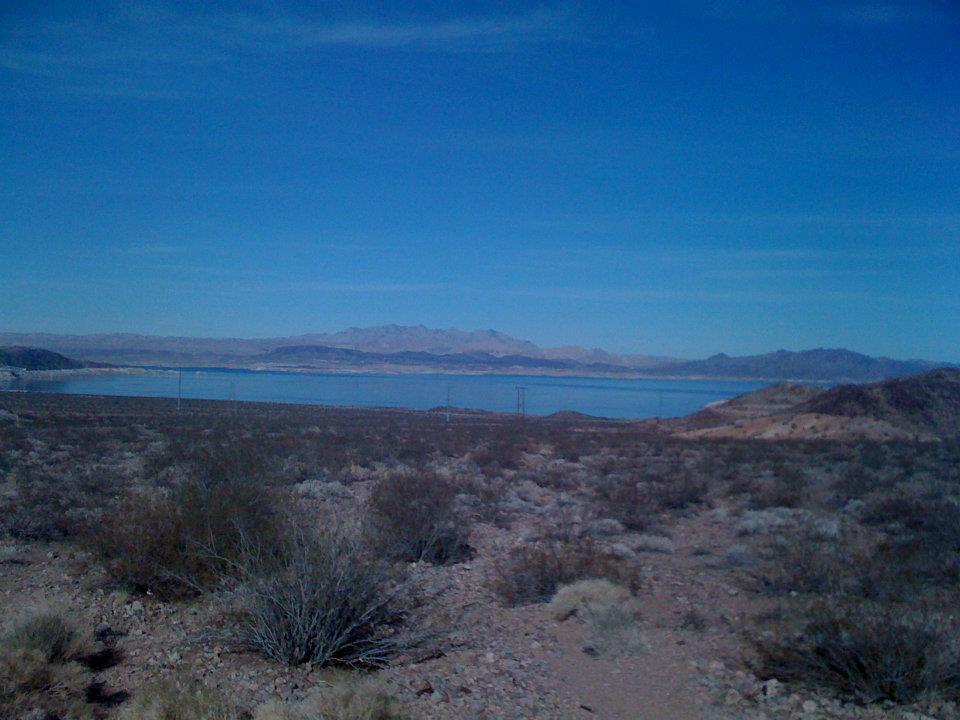
3 Safety Tips for Swiming in Shark-infested Waters
No matter where you swim near sharks, you still have only a 1 in 3,748,067 chance of being a victim of a shark attack.
You can take safety steps to make that number even larger:
- The peak activity time for sharks is at twilight or at night, so you might want to plan your swimming for the daytime. Not only are there more sharks during this time, but they are looking for food. Sharks are also going to be more active near fishing boats. The workers on these boats drop chum in the water, which is a nice snack for sharks. The American Red Cross says if you see sea birds diving into the water, there might be sharks, so stay away.
- Keep splashing to a minimum. It is tempting to flip around and splash in the warm beach waters, but that is just something that could attract a nearby shark. If you do see a shark nearby, do not freak out and cause even more splashing. The faster and smoother you can move toward land, the safer you will be. If you think there might even be sharks in the water, do not let a dog in. You cannot logically explain to a dog that splashing is bad. Keep the dog playing on the beach for safety.
- Know the difference between a shark fin and a dolphin fin. Many swimmers have run for shore when it turns out it was just a couple of dolphins roaming in the waters. Shark fins stay constant at the water level. Dolphin fins go up and down. Shark fins are like a triangle, with a straight edge on the back of the fin. Dolphins have a curved edge on their back fin. When in doubt, assume it is a shark and head to shore, but knowing the difference might help curb a panic attack in the water.
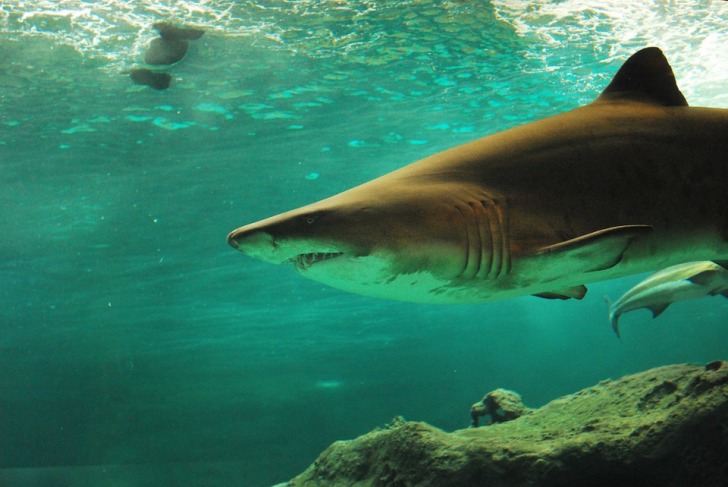
Summary
Lake Mead is a fishing, boating, swimming, and paddling paradise just outside Las Vegas, Nevada.
You will not find any sharks in the waters of Lake Mead or the descending Colorado River.
There are 10 drop sites to go scuba diving, so you can see the shark-free waters for yourself.
You might see big creatures in the water, but rest assured those are not sharks—they are most likely striped bass that can be the size of a medium-sized dog.
You might also catch a glimpse of The Lost City, which is an archeological wonderland that was submerged by the damming of the Colorado River.
Many artifacts were saved and now reside at The Lost City Museum in Overton, but there is still a prehistoric site down beneath the waters.
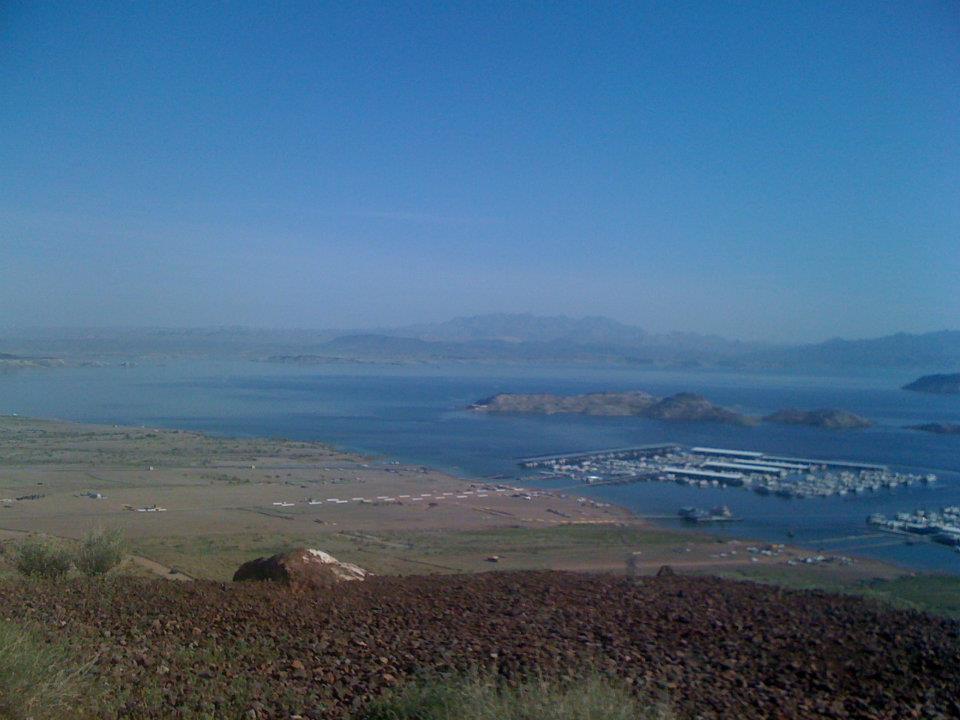
Sources
- Shark story: https://www.reviewjournal.com/uncategorized/knowing-vegas-whats-really-at-the-bottom-of-lake-mead/
- Swimming: https://www.nps.gov/lake/planyourvisit/swimming.htm
- Fish in Lake Mead: https://www.nps.gov/lake/planyourvisit/fishing.htm
- Shark tank in the pool: https://www.goldennugget.com/las-vegas/amenities/h2o-pool/
- Sharks in salt/freshwater: https://usa.oceana.org/blog/could-shark-live-lake/
- Shark attack risk: https://www.floridamuseum.ufl.edu/shark-attacks/odds/compare-risk/death/
- River sharks: https://www.ncbi.nlm.nih.gov/pmc/articles/PMC4629339/
Frequently Asked Questions
If I cannot find sharks in the water, what can I find?
You will not be able to scuba to the B-29 bomber site unless you are on a commercial tour.
You might see a wide variety of vehicles submerged in the lake as the National Park Service says there is an aggregate plant underwater along with other planes, boats, and cars.
You can also visit the ghost town of St. Thomas.
What was once a Mormon settlement went underwater when the lake was filled up in the 1930s.
The Western United States drought has lowered lake levels, revealing the remnants of St. Thomas in the north end of the park.
Could a shark survive in Lake Mead?
Given that sharks need to have a balance of salt in their bodies to survive, even the meanest shark would not last long in Lake Mead.
The freshwater lake provides drinking water to the Las Vegas area and several surrounding states.
It is monitored around the clock for any irregularities.
Should someone put a shark in there, a bull shark could last up to four years, and a saltwater shark would not last more than a day or so.
Sharks need the salt to stay buoyant, and in salt water, sharks are saltier than the water itself, which helps them navigate.
In freshwater, one of the many things that would impact a shark is that it will sink right to the bottom.
So, even if a shark made it to Lake Mead, it would not be able to swim around.
Are there any sharks near Lake Mead?
Yes!
Las Vegas has several options for seeing a shark without having to worry about safety.
There is the Shark Reef Aquarium at Mandalay Bay where sharks swim around you and over your head in a circular pool, safely protecting tourists with thick glass.
For a real adventure, level up your experience with a shark feeding experience or diving expedition all with the safety of shark experts guiding your way.
Then there is the Shark Tank at the Golden Nugget pool.
A waterslide goes right through the 200-gallon shark tank and, while wading in the pool, you can float right up to a shark just 4 inches away, but not able to cause any injury.
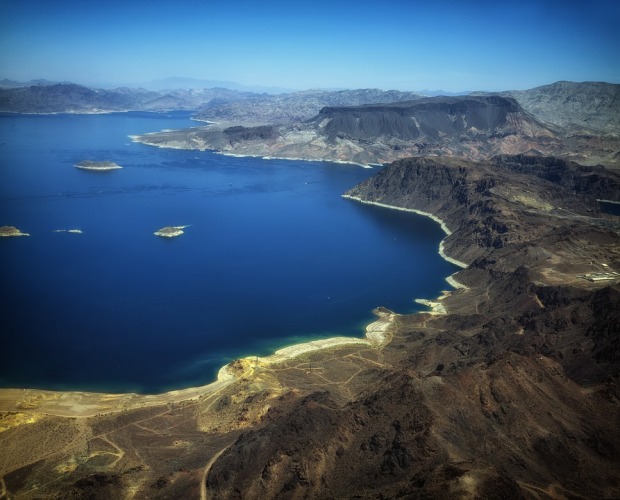



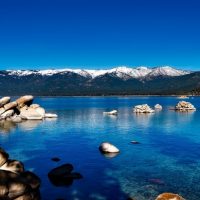







There are no sharks in Lake Mead, but there are plenty of interesting stories and things to explore in the man-made reservoir.
Don’t worry about sharks – they’re not there.